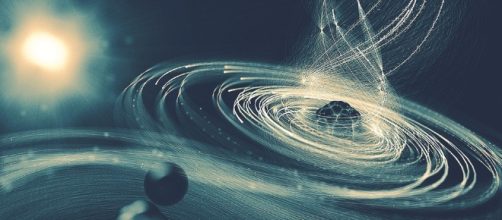Physicists at the Department of Energy's SLAC National Accelerator Laboratory have discovered a phenomenon at the molecular level very similar to the phenomenon of a black hole. The physicists focused an X-ray beam at a small molecule to see what would happen in such situation. To their surprise, the Laser Beam ''knocked out'' most of the electrons from one atom in the molecule, leaving a ''void'' which caused this atom to pull electrons from the surrounding atoms in the molecule, very similar to a black hole pulling matter in a spiral form. Within a very short time, roughly 30 femtoseconds, the molecule lost about 50 electrons.
All the similar experiments that involve focusing a laser beam on an atom or a molecule tend to explain how matter reacts with a laser, but the current study has a different purpose, it was meant to study and predict any damage caused by radiation in small molecules.
The study was published in Nature under the name ''Femtosecond response of polyatomic molecules to ultra-intense hard X-rays''
How it was done
In order for the physicists to perform the experiment, they used specific mirrors designed to be able to focus the laser beam at a very small spot, only 100 nanometers in diameter, a size which is a thousand times smaller than a thin human hair.
The physicists used three different molecules in their experiment, molecules that are considered to be heavy molecules based on the number of electrons they contain.
When the laser hit the molecule, several electrons were knocked out creating a molecular hole, which in turn made the atom suck electrons from surrounding atoms. But the new electrons didn't stay for long as the laser beam also caused the new electrons to be knocked out of the molecule, causing the molecule to lose many of its electrons.
Agreement between theory and observation
Physicists are not sure exactly how many electrons were lost in the process, but they estimated that roughly 60 electrons were lost in their experiment. It is not an easy task to observe and calculate all the electrons that exit the molecule for several reasons.
So far, all the observations are in perfect agreement with the theoretical models which are already formulated, which gives the physicists more confidence that in the future more complex systems will be predicted and understood. Understanding these systems will be very beneficial in many applications, from higher resolution images of biological molecules to technological devices with greater efficiency.


